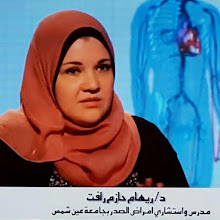• Both are characterized by repeated episodes of pulmonary hemorrhage
• Both produce iron-deficiency anemia and both can produce pulmonary insufficiency
• Pathology
• Hemorrhage is typically confined to peripheral airspaces
• Diffuse interstitial fibrosis, hemosiderosis are common
• Vasculitis doesn't always occur even though these are autoimmune diseases
• Hemoptysis more copious in IPH
• Prognosis for both diseases is grave – both are treated with steroids and cytotoxic agents
Idiopathic pulmonary hemorrhage
• Occurs most commonly in children under the age of ten
• When it occurs in adults, it is twice as common in men
• Anti-glomerular basement membrane antibody should be absent (unlike Goodpasture’s)
Goodpasture’s syndrome
• Goodpasture’s includes renal disease
• Renal lesion is glomerulonephritis
• It is a disease of young adults
• Most are men
• Autoimmune etiology
• Both lung and renal pathology believed 2° to anti-glomerular basement membrane antibody cross reacting with lung basement membrane
X-ray
• Identical changes in both diseases
• Early in the disease, it is alveolar in nature, more prominent at the bases and perihilar regions — simulates pulmonary edema
• Within 2-3 days, the blood is absorbed in to the interstitium and the pattern changes to interstitial reticular
• By about 10 days, the reticular disease disappears
• With repeated bleeds, there is hemosiderin deposit in the lungs and progressive pulmonary fibrosis occurs
• Once this occurs, the new hemorrhage is superimposed on the old interstitial disease, so the reticular pattern remains rather than disappears when the blood is absorbed
• May have pulmonary hypertension
• May have hilar adenopathy
• Both produce iron-deficiency anemia and both can produce pulmonary insufficiency
• Pathology
• Hemorrhage is typically confined to peripheral airspaces
• Diffuse interstitial fibrosis, hemosiderosis are common
• Vasculitis doesn't always occur even though these are autoimmune diseases
• Hemoptysis more copious in IPH
• Prognosis for both diseases is grave – both are treated with steroids and cytotoxic agents
Idiopathic pulmonary hemorrhage
• Occurs most commonly in children under the age of ten
• When it occurs in adults, it is twice as common in men
• Anti-glomerular basement membrane antibody should be absent (unlike Goodpasture’s)
Goodpasture’s syndrome
• Goodpasture’s includes renal disease
• Renal lesion is glomerulonephritis
• It is a disease of young adults
• Most are men
• Autoimmune etiology
• Both lung and renal pathology believed 2° to anti-glomerular basement membrane antibody cross reacting with lung basement membrane
X-ray
• Identical changes in both diseases
• Early in the disease, it is alveolar in nature, more prominent at the bases and perihilar regions — simulates pulmonary edema
• Within 2-3 days, the blood is absorbed in to the interstitium and the pattern changes to interstitial reticular
• By about 10 days, the reticular disease disappears
• With repeated bleeds, there is hemosiderin deposit in the lungs and progressive pulmonary fibrosis occurs
• Once this occurs, the new hemorrhage is superimposed on the old interstitial disease, so the reticular pattern remains rather than disappears when the blood is absorbed
• May have pulmonary hypertension
• May have hilar adenopathy

No comments:
Post a Comment